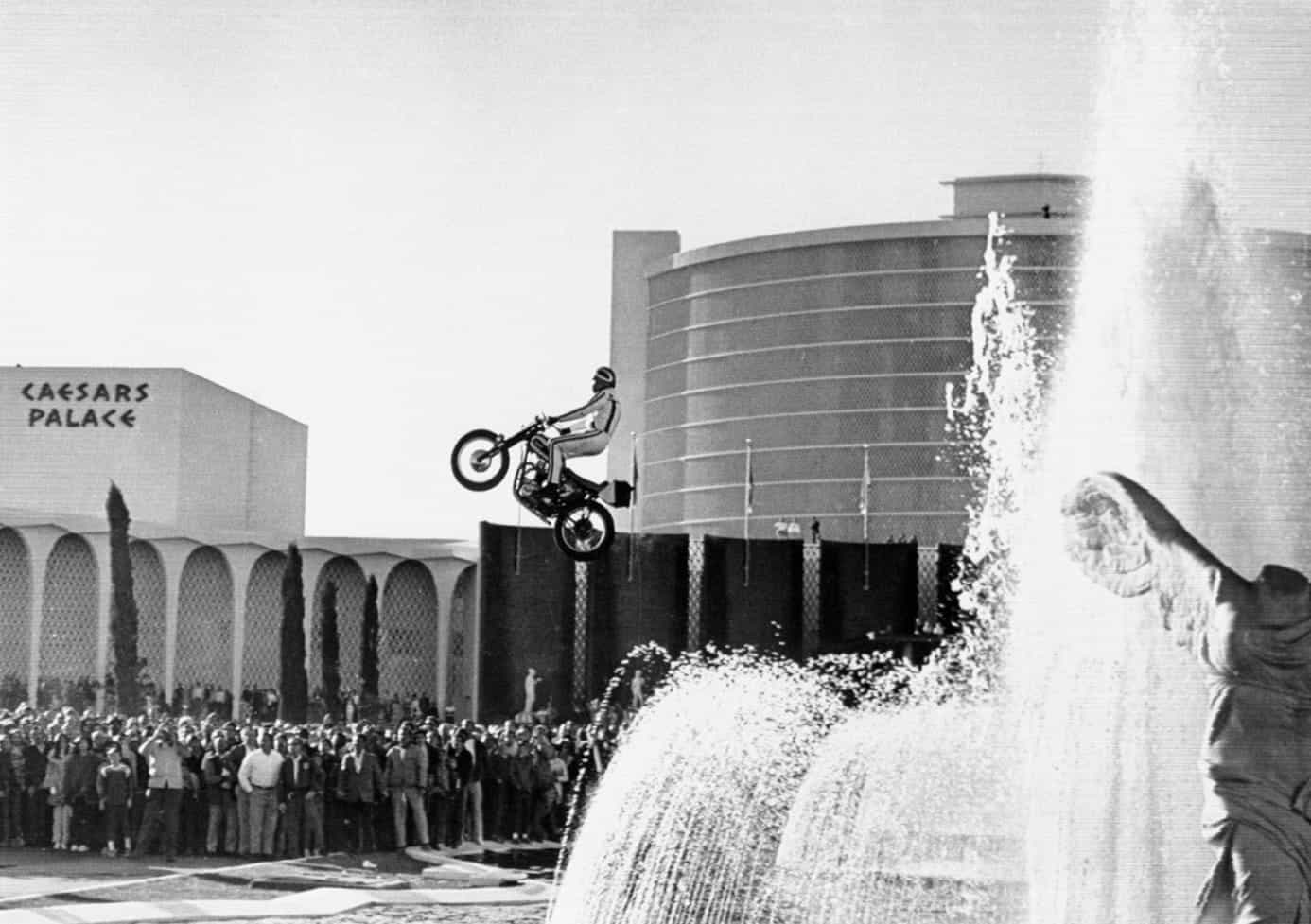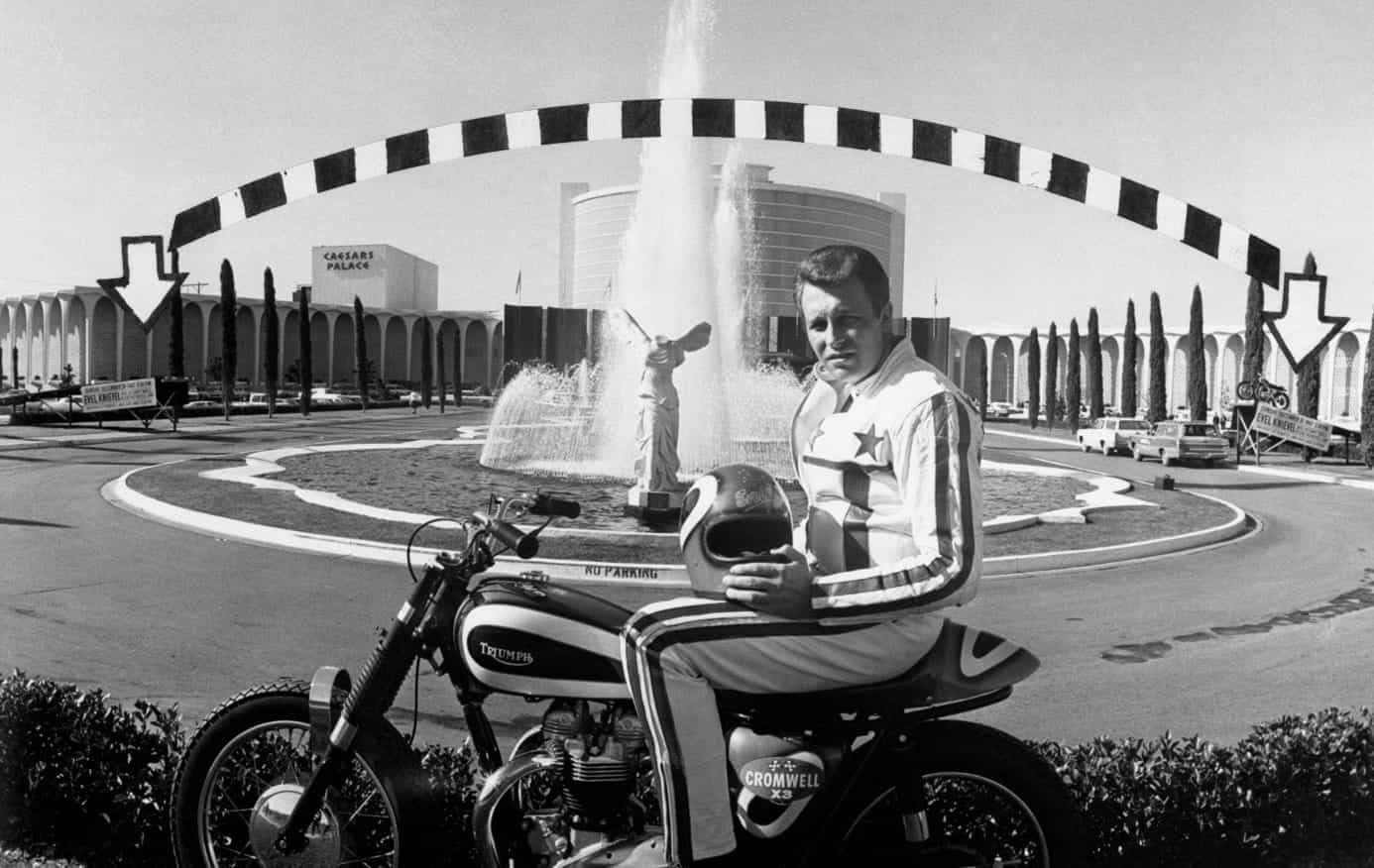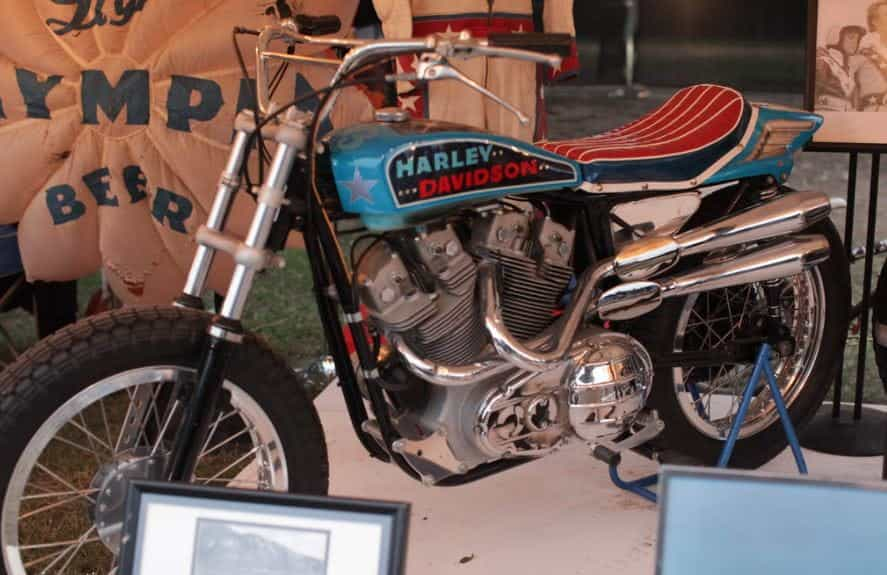
For the most part, the Beatles and The Monkees ruled the pop charts. But the summertime airwaves were owned by Scott McKenzie and his track ‘San Francisco (Be Sure to Wear Some Flowers in Your Hair)’. It became an anthem for the year which would be forever known as the Summer of Love which encompassed hippie music, hallucinogenic drugs, anti-war protests, and free love.
There is some real romance associated with looking back on an era of fun, freedom and love. If you want to get a slice of modern excitement, then we recommend that you have a look at our favourite online casinos. What’s better is that you don’t need to leave your home and travel all the way to the States these days to play top quality live casino sites and experience some Vegas fun.
Elvis Yet to Enter the Building
Flower power’s focal point was San Francisco’s Haight-Ashbury neighborhood where an estimated 100,000 people would regularly gather to join in a popularized version of hippieism. 420 miles away in Las Vegas, where the entire city’s population was 181,000 (it is now 15 times bigger), Elvis Presley married Priscilla Beaulieu at the Aladdin Hotel and Casino in May 1967.
But the first of the 600-plus sold-out shows ‘The King’ was to perform during a seven-year residency in the city did not begin for another two years. The singer, who died in 1977, is now synonymous with Las Vegas.
His later career and the city are intertwined to the point whereby Vegas has hundreds of impersonators, his ‘Viva Las Vegas’ song is its unofficial anthem – ironically, Elvis never performed it live – and there are numerous statues and memorials of Elvis around the fabled Strip.
So, was Elvis the person who truly put the city on the map? No, Las Vegas was already a major tourist attraction and was growing rapidly in the 1960’s. Jerry Lewis, the Rat Pack – Frank Sinatra, Dean Martin and Sammy Davis Jr – Liberace, Marlene Dietrich and many more stage performers had played a part in the ongoing Vegas success story.
Unknown Evel
However, in 1967, it was a stunt performer who brought danger to Las Vegas and it would become a long-lasting love affair. His name was Robert Craig Knievel. Better known by the pseudonym Evel Knievel, his stage was the fountains outside of Caesars Palace. The daredevil’s instrument was a Triumph Bonneville 650 TT motorcycle which weighed over 400lbs.
Unlike Vegas acts before, and since, Knievel achieved fame in Las Vegas, he did not arrive with it. In fact, in 1967, the 29-year-old was a relative unknown who had only launched his daredevil career a year beforehand.
Nevertheless, he managed to persuade Jay Sarno, Caesars Palace CEO, to allow him to attempt to jump over the fountains that welcomed visitors to the now famous hotel. The publicity stunt was an ideal way to promote the venue which had opened just a year earlier. At the time, Caesars’ fountains were billed as ‘the world’s largest private fountain display’ with 18 fountains pumping 350,000 gallons of water per-minute.
The ABC’s
It was hoped the ABC television network would broadcast the 141-feet jump attempt live on their Wide World of Sports show. They baulked at the costs and so declined. Consequently, the fledgling stuntman employed actor/director John Derek to document the jump. The film was shot on such a low budget Derek’s then-wife, Linda Evans – later to be a star of Dynasty – worked as a camera operator.
“At dinner the night before, he told us he didn’t think he was going to make it” she said of Knievel Caesars jump during a 2011 book launch. “It was terrible,” referring to the spectacular stunt. The spectacular part was the landing. It went horribly wrong, and Evans was holding the camera at the intended landing area when it did.
Returning to earth short of the planned landing spot, Knievel was thrown over his handlebars impacting with the ground on his back where he immediately crushed his pelvis. In addition to fractures of his femur, hip, wrist and both ankles, he broke over 40 bones.
Concussed, it was reported he slipped into a coma which lasted 29 days. But while Knievel lay in a hospital bed unconscious, he entered the consciousness of an American public who watched the dramatic failed stunt on the channel which had originally turned down the rights to broadcast it live.
Generation Super-Hero
ABC paid considerably more for John Derek’s footage of the bone-crushing jump than they could have originally bought the live rights of the event. But they knew their audience lusted for larger-than-life comic-book-style heroes. At the time their live-action TV series, Batman, was proving a huge hit.
Ironically, the stunt going wrong was the making of what was to become a huge star. As Leigh Montville explained in ‘Evel: The High-Flying Life of Evel Knievel: American Showman, Daredevil, and Legend,’ a 2011 biography of the stuntman’s life:
“The crash was the foundation of his entire career, the moment he was delivered to the American public. No one can say what would have happened if he had completed the jump, but a pretty good guess is that the news would not have moved outside of Las Vegas.”
Fountains of Fortune
Caesars Palace CEO Jay Sarno was amongst the first to benefit. Author David G. Schwartz later noted in his book – ‘Gradissimo: The First Emperor of Las Vegas: How Jay Sarno Won a Casino Empire, Lost It, and Inspired Modern Las Vegas,’ – “The jump fixed the Caesars Palace fountains in the public consciousness.”

This 1967 publicity shot shows the planned trajectory of Knievel’s planned Caesars Palace fountain jump. It was not completed successfully until his son, Robbie, landed the stunt in 1989.
“Since it opened, the property has been expanded, renovated and remodeled so as to make it unrecognizable. But one featured remained untouched: Jay Sarno’s fountains. Had Knievel’s jump not rendered them so iconic, they might have gone the way of the Circus Maximus (Showroom), Bacchanal (gourmet room) or screen block exterior. But the fountains remained.”
In the book Schwartz indicates the failed Knievel jump was also a launch-pad for Caesars becoming a venue for major sporting events including two Formula One Grand Prix races in its parking lot. Film aficionados will know the importance of the Caesars Palace fountains in 1988’s Raiman, a road-drama movie that collected four Academy Awards.
International Stardom
A recovering Knievel could not have imagined what enormous publicity his crash had generated. ABC had given broadcast rights of the crash to the UK’s ‘World of Sport’ television show. This brought him to Europe’s attention and almost eight years and several more broken bones later he had no problem selling 90,000 tickets to people eager to see him jump 13 double-decker busses inside Wembley Stadium.
This too resulted in a catastrophic crash as did his 1974 attempt to cross Idaho’s Snake River Canyon in a steam-powered rocket. The cliché ‘there is no such thing as bad publicity’ may have been created with Knievel in mind because, in the early 1970’s, he was more famous than the first man to walk on the moon.
Evel Knievel's rocket and crew. It was designed to cross Idaho's Snake River Canyon, it failed. (September 1974) pic.twitter.com/w6WssCv4u0
— Sports & Betting History (@CDCHistory) September 17, 2016
After all, Neil Armstrong did not appear on posters displayed in almost every young boy’s bedroom wall, have a pinball machine dedicated to him or sell over $125 million worth of toys bearing his likeness. The stuntman was also star of his own biopic movie, ‘Evel Knievel’ and feature film, ‘Viva Knievel.’
But the failed Caesars jump will always be considered Knievel’s defining moment. It was not lost on the performer. For years he unsuccessfully pleaded with authorities to allow him to jump the nearby Grand Canyon and he performed countless jumps throughout the state of Nevada including Carson City where he broke his back in an October 1968 crash.
Inspirational Legacy
Long after Knievel’s retirement, in 1999, he married his second wife, Krystal Kennedy, at Caesar’s Palace on a platform above the fountains. Nearby, in the casino where it had been on display for decades, was a Triumph motorcycle painted with Knievel’s signature red, white and blue stars-and-stripes which was once used by the daredevil.
But his legacy still inspires people today and generations of stunt performers, including Knievel’s own son, have been wooed by Vegas ever since.
It was 12 years before the next attempt on Caesar’s fountains was made. Gary Wells was 23 and healthy when he took up the challenge for a brand-new ABC show called ‘That’s Incredible’. The only thing incredible about it was Wells surviving with his life.
Completely missing the landing ramp, he crashed into a concrete wall at 85 miles-per-hour breaking his back, both legs and rupturing his aorta. Wells survived but like Knievel he never attempted the fountain jump again.
Kaptain Knievel Landed It
The first successful Caesars fountain jump happened in 1989 when Knievel’s son, Robbie, successfully made the crossing 22 years after his father had failed when watched by his six-year-old son. The appetite for motorcycle jumping had not waned so Robbie Knievel became an overnight star when finally landing this stunt.
During the following 20 years Knievel Jnr, who often used the moniker ‘Kaptain Robbie Knievel’ made Nevada, and particularly Las Vegas, his home. In 1998 he performed a record-breaking jump of 231 feet (70 m) over 30 limousines at the Tropicana Hotel.
One year later he jumped a 130-foot gap between the Vegas Jockey Club towers from a height of 13 stories. Later in 1999 he was given permission to do what his father could not, make an attempt on a Grand Canyon crossing.
Part of a live Fox Sports TV extravaganza, Kaptain Knievel cleared the Grand Canyon and jumped a personal record of 228 feet. But it wasn’t a complete success as the stuntman broke his leg on landing.
Madison Conquers Vegas
The next generation of Vegas bike jumpers was led by Australia’s Robbie Madison. 40 years to the day of Evel Knievel’s failed Caesars’s jump, as part of a live ESPN broadcast from Las Vegas, the Australian jumped a football field registering a world record 322 feet jump distance.
12 months later he returned to Sin City to jump upwards and land on the replica Arc de Triomphe in front of the Paris Hotel and Casino. He then proceeded to ride off the monument descending 80-feet on to a landing ramp.
How Evel Landscaped Vegas
Away from the high-octane fascination with bike jumping made popular by the innovative Evel Knievel, it is hard to quantify just how much the man did for Vegas.
Super Dave Osbourne, a satirical stuntman character, was amongst the first to produce a show direct from the city after Knievel introduced Vegas to a danger act.
A plethora of illusion/danger types have followed. Criss Angel and Penn & Teller – who are the longest running headliners to play at the same hotel in Las Vegas history and famed for their ‘bullet catch’ – are good examples. Would their brand of entertainment have thrived in Vegas if it were not for Knievel’s daring Caesars jump?
Evel Died a Christian
So, what happened to Evel Knievel? Remarkably he failed in his attempts to kill himself on a motorbike. A 1977 guilty plea to battery saw him serve six months in jail. The disgrace led to him losing his endorsements and quickly going through the fortune he had acquired. He declared bankruptcy in 1981.
While no longer performing stunts he did enjoy something of a revival in the early 2000’s with a rock-opera based on his life and the opening of the ‘Evel Knievel Roller Coaster’ in Missouri.
In 2005, six years after he was given a liver transplant, Knievel was diagnosed with incurable lung disease. Baptized on April 1 2007 before a television audience, he died in on November 30 2007 aged 69.
Eight years after his passing ‘Being Evel’ a 2015 American documentary film about the daredevil premiered at the Sundance Film Festival. The film has a 97% approval rating on the review-aggregation website Rotten Tomatoes which declares the movie to be an: “Insightful and swiftly paced, Being Evel is an entertaining, well-crafted overview of an unforgettable character.”



